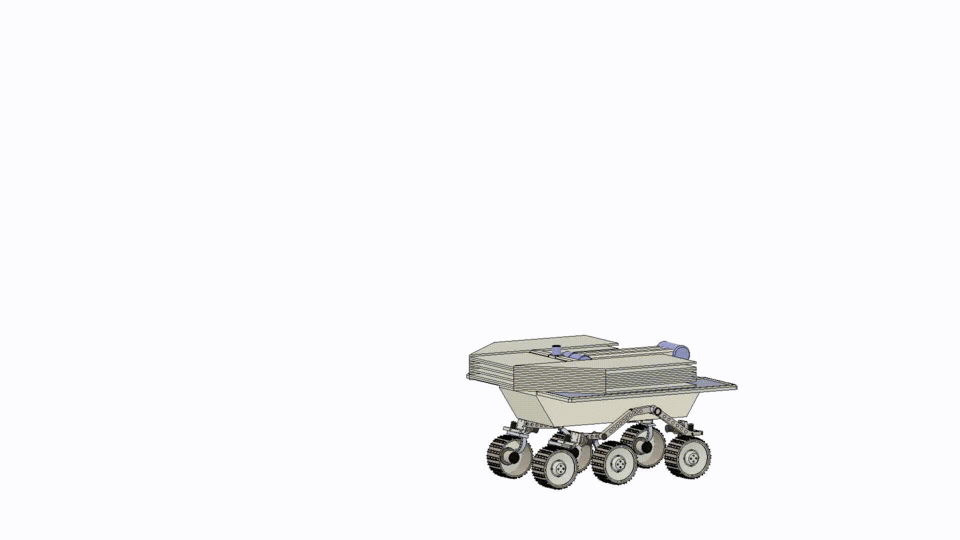
Osura (NASALunarTorch)
grabcad
This is Osaura. Osaura is an origami inspired heliostat deployment system. The origami pattern was from researching compact origami structures – inspired by the Tachi Miura folding pattern. The system features a small rover (1.40x1.30x0.67m) with a concept robotic harm to elevate the folded origami structure. It also features two ~0.5m2 solar arrays alongside the rover. The heliostat is compact enough to allow for antennas, power connecters, sun sensors etc. on the rover.The origami structure is made up of thin panels (12mm - can be more or less) that have a combined reflective area of 10.43m2. These sheets can be made from a light-weight bend-resistant material with a very thin sheet of reflective material (~0.2-1mm). Having bend-resistant material will limit deformation during deployment. Each sheet would have 1 or a few spring-loaded hinges to aid deployment or retraction. This origami structure is anticipated to be 15-25kg (~25kg for aluminium panels). Alternatively, the origami structure instead could be made from one thin film sheet and have structural cylindrical supports along the creases of the folds (similar to a camping tent). That way the structure would be much lighter (this is harder to model and is not shown). This flexibility highlights one of many advantages of this design. The robotic arm lifts the origami structure to aid deployment. The origami structure can be unfolded using an extendable double-sided boom. Extending the booms axially can deploy the whole structure (see "showing outward axial motion deploys heliostat" gif). The components on the boom that attach to the origami structure will naturally swivel 90 degrees as the boom gets extended. The arm depicted in this submission could be one of many ways to lift the structure - this design offers flexibility in different arm designs if need be. Using a robotic arms allows the origiami structure to to be orientated in numerous ways (several DoF) and can also be a CoM/CoG compensation when on slopes. The arm is estimated to be ~25-35kg. During transport, the booms can be retracted to fold the origami structure back, or the robot arm can be retracted with the heliostat facing upwards for ease of mobility. The name “Osura” was inspired by the name “Xiphosura” which is a name related to horseshoe crabs…the folded stowed system shape reminded me of a horseshoe crab…Dimensions in drawings are in mm.Rover wheels credit: Sojourner Rover
With this file you will be able to print Osura (NASALunarTorch) with your 3D printer. Click on the button and save the file on your computer to work, edit or customize your design. You can also find more 3D designs for printers on Osura (NASALunarTorch).
